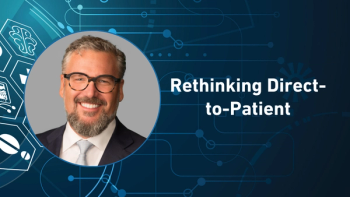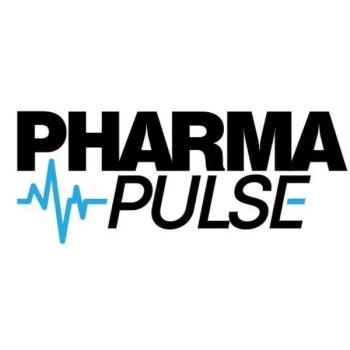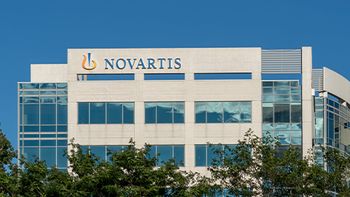
- Pharmaceutical Commerce - May/June 2015
Understanding the companion-diagnostics environment
While the pharma industry is growing more dependent on companion diagnostics, test developers face an uncertain business model
The first companion diagnostics were launched in the 1980s in the face of significant skepticism from drug developers as to whether segmenting a drug’s market through a diagnostic was advisable. The commercial success of Herceptin (trastuzumab) and Gleevec (imatinib), which both require testing with companion diagnostics before being prescribed, has moved the entire field forward. From a start of a handful of oncology drugs with corresponding diagnostics, the field has expanded to include multiple therapeutic areas, and the number of combinations has grown by 12-fold with revenues now in the $1.5-billion range.
The FDA definition of companion diagnostics only encompasses two types of companion diagnostics—theranostics (combining diagnosis and targeting the appropriate therapy) and monitoring tests. Other tests—screening and detection, prognosis, and recurrence—provide critical information but do not specify a corresponding therapeutic. While these other three categories do not fit the FDA criteria, they are essential to the growth of companion diagnostics, as they account for the majority of revenue for companies that develop these tests. Oncology will remain at the forefront for the foreseeable future based on currently approved drugs, but other therapeutic areas are beginning to emerge, including cystic fibrosis, human immunodeficiency virus (HIV) and severe growth failure.
Apart from situations where the potential companion diagnostic enables a drug to be commercialized, drug developers see little reason to pay a premium to the initial diagnostic test developer when numerous diagnostics players may enter the market. Diagnostic companies, on the other hand, would like to receive royalties on sales of the drug or sales-based milestones to share some of the long-term value of the combination and compensate them for the risk of the drug not being approved or lackluster sales. Up to now, drug development partners have preferred to structure payments to test developers as fee for service or through fixed milestone payments. These payments are usually not enough to ensure a profitable outcome for the diagnostic developer and require them to obtain reimbursement from payers in generating sufficient returns on investment.
Starting with the development of the companion diagnostic, the drug developer has different interests from those of the diagnostic company. The drug developer wants the most accurate test available to the greatest number of physicians at the lowest cost in the shortest period of time, with all attention focused on selling the greatest volume of pharmaceuticals. For chronic diseases, it does not require many patients for drug volumes to increase substantially. The companion diagnostic is the key gatekeeper in determining which patients will benefit.
Diagnostic developers, on the other hand, may not have an interest in developing a companion diagnostic test, especially if the test is for a limited patient population. Unlike the drug developer that can count on a lifetime of revenue from chronic treatment of a patient, the diagnostic developer only gets paid per test. Even in cases where the market for diagnostic tests is sufficiently large, resource constraints can create roadblocks. Few diagnostic companies have a sales force to educate health care providers on ordering the appropriate diagnostic test.
These issues have led pharmaceutical companies to evaluate four different approaches to obtaining companion diagnostics: internal development of companion diagnostics, partnering with an established diagnostic company, acquisitions of diagnostic companies, and hybrids of the first three options.
While pharmaceutical companies are most interested in companion diagnostics that are theranostics and monitoring types of tests, payers appear to be more interested in the other types of companion diagnostic tests, such as those that indicate whether a standard course of therapy (such as Genomic Health’s Oncotype DX test for breast cancer) can be applied, or diagnostic tests that provide information on multiple potential treatment options in a therapeutic area. The current model of a single diagnostic test tied to a single pharmaceutical agent is unlikely to survive payer pressure for greater efficiency and cost-effectiveness. As multiple therapeutic agents are approved for similar clinical indications, payers want to identify the best product for a particular patient and not pay for multiple similar tests. This push to multiplex assays, which has already occurred in most other diagnostics categories (e.g., blood work panels, metabolic panels), will become increasingly common in companion diagnostics.
The future of companion diagnostics
The future growth of companion diagnostics will rely upon a thriving ecosystem. The ecosystem needs multiple players to be vibrant. The major players must include drug developers that continue to develop targeted therapies based on biomarkers, diagnostic firms with the capability to create new diagnostic tests, regulators that are willing to approve combination products of drugs and diagnostics, and payers who see the value in reimbursing targeted therapies.
However, diagnostic firms are the one group for which the business model of companion diagnostics is still uncertain. This is particularly true for those diagnostic companies seeking to develop theranostics. Those diagnostics companies that develop for all types of companion diagnostics—screening and detection, prognosis, recurrence, as well as theranostics and monitoring—can leverage their portfolio of tests to create a sustainable business model. Those companies that seek to focus only on theranostics and monitoring diagnostics will face a more uncertain future.
ABOUT THE AUTHORS
Amit Agarwal, Glenn Snyder and Daniel Ressler are all Principals at Deloitte Consulting LLP. Amit leads Deloitte’s R&D Practice on the West Coast with particular focus on diagnostic clients. Glenn is the U.S. leader of Deloitte’s Medical Technology Practice, with a focus on clinical diagnostic companies. Daniel leads Deloitte’s Life Sciences R&D Practice for North America.
This article is excerpted from “The current and future state of companion diagnostics,” Pharmacogenomics and Personalized Medicine, 2015:8 99-110, and accessible online at
Articles in this issue
over 10 years ago
HPCLC Spring Meeting recapover 10 years ago
Pharmaceutical Commerce at 10over 10 years ago
A Conversation with Shabbir Dahod, TraceLinkover 10 years ago
A Big Data approach to patient engagement and adherenceover 10 years ago
What makes specialty pharmacies 'special'?over 10 years ago
2015 Product Security Reportover 10 years ago
Compliance packaging vendors keep innovatingover 10 years ago
US spending on drugs hit $373.9 billion in 2014, up 13.1%over 10 years ago
Cryoport expands the user base of its cryogenic shipping servicesNewsletter
Stay ahead in the life sciences industry with Pharmaceutical Commerce, the latest news, trends, and strategies in drug distribution, commercialization, and market access.





